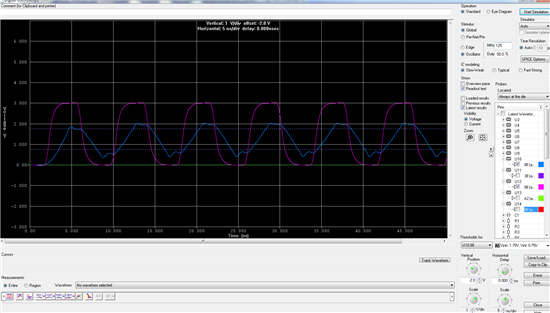Hello all,
I need to send and receive a RGMII bus (txclk ,txctl and txd[3..0]) 125MHz DDR (dual data rate) through a backplane, the problem it is that the distance is too long (> 14 inch), I was thinking to use a serializer in my board an a deserializer in the other side. in order to transmit and receive RGMII.
I was thinking to use the TLK1211 but I have a question:
can I send and receive RGMII from the MAC to the TLK1211?
the TLK1211 can accept RGMII in the reduced 5-bit interface mode utilizing double data rate (DDR) clocking??
could you help me to get the documentation of the TLK1211 evaluation board (TLK1211EVM)?
Regards


